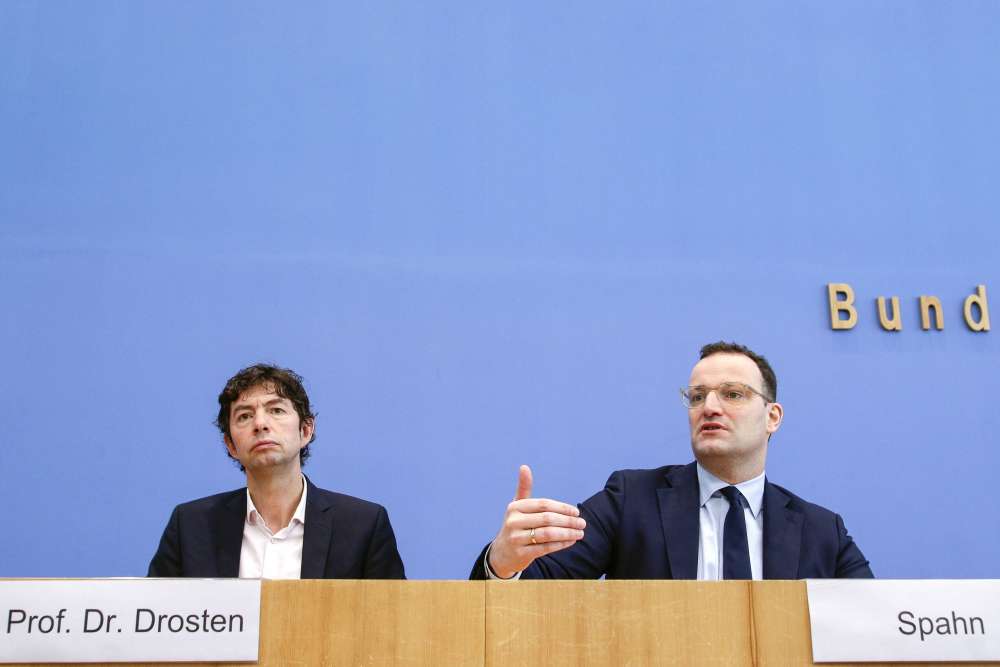The ‘Zoomification’ of Academia: Addressing Risks to Academic Freedom

Before early 2020, Zoom, Webex and other video conferencing platforms were not a daily presence in the lives of most professors and students. The COVID-19 pandemic has changed that. Over the course of repeated lockdowns, countless professors and students around the world – at least, those fortunate enough to have access to computers and the internet – have come to rely on web conferencing programs for teaching and learning, with many classroom discussions now taking place online. In many cases, public forums and university conferences have shifted to virtual spaces as well.
This trend has some obvious upsides: Platforms like Zoom have prevented academic life from grinding to a complete halt. International students, many of whom left university campuses for their home countries, have participated in their programs from afar. Online workshops and discussion events have allowed universities to bring together speakers from around the world with plenty of flexibility and a relatively low carbon footprint.
Yet, the move to virtual discussion spaces has also raised questions about potential risks, such as increased surveillance and (self-)censorship. These dangers are by no means new – surveillance and censorship have long plagued offline academia – but the shift to online learning has exacerbated them. The degree to which the situation has deteriorated is hard to measure, in part because self-censorship is extremely difficult to observe or quantify. However, not knowing the full extent of the problem does not mean that we cannot take steps to mitigate the risks.
So far, debates and writings on online learning and academic freedom have focused on two main problems: first, that virtual platforms have the ability, as private companies, to act as censors and shut down online class sessions and discussions at the request of authoritarian governments; second, that the heightened risk of surveillance, harassment and other forms of political interference in online instruction can have a chilling effect on the free speech of both faculty and students.
This article discusses a number of cases that illustrate these dangers and outlines potential remedies for university administrators and faculty. The good news is that thoughtful scholars and researchers have already begun assembling a toolkit of best practices to mitigate risks. Many of the existing suggestions have emerged from the field of China studies in the United States and the United Kingdom, whose scholars have been at the forefront of the online learning debate. But their insights are also applicable to teaching in continental Europe and beyond.
Censorship by Online Platforms
Initial concerns at the onset of the pandemic focused on the ability – and apparent willingness – of private platforms to censor online teaching and discussions at the behest of authoritarian regimes and other outside actors. Two high-profile cases in 2020, in which Zoom shut down or disrupted online sessions for what appeared to be overtly political reasons, threw the issue into sharp relief.
In the first example from June 2020, Zoom came under fire for suspending the accounts of several human rights activists who were using the platform to commemorate the 1989 Tiananmen Square massacre in Beijing and discuss the Chinese government’s intensifying crackdown on political dissent in Hong Kong – both topics that the Chinese Communist Party (CCP) considers taboo. In a statement on the incident, Zoom explained that it had terminated the Tiananmen-related meetings and associated accounts at the request of the Chinese government, which claimed that the meetings were illegal. Strikingly, several of the suspended accounts and events were based in Hong Kong and the United States, highlighting the potential cross-border reach of state censorship in the hands of private companies. Going forward, Zoom pledged to thwart the international reach of Chinese state control, stating that it would “not allow requests from the Chinese government to impact anyone outside of mainland China.” But, as critics pointed out, the company made no such commitments to users located inside mainland China and did not clarify whether it would actively monitor online meetings to ensure their ‘legality.’
A second controversy emerged in September 2020, when Zoom shut down several academic events in connection with Palestinian activist Leila Khaled. Khaled, who initially rose to prominence as a plane hijacker in the 1970s, was scheduled to speak at an online seminar with San Francisco State University. Pro-Israel activists learned about the scheduled event and called on Zoom to forcibly cancel it. The company complied, arguing that the seminar might violate US terrorism laws due to Khaled’s membership in the Popular Front for the Liberation of Palestine, which the US Department of State has designated as a terrorist group. Zoom also canceled seminars related to Khaled at several other American and British universities, as well as another seminar with Khaled co-hosted by San Francisco State University and the University of California, Merced in April 2021.
Fortunately, such outright censorship of academic and activist voices by online learning platforms is rare. In addition, a Zoom statement from April 2021 offered grounds for cautious optimism: going forward, the company vowed to act on content violation reports for academic events only if those reports originate from the account holder or meeting host. However, the new policy will not apply in cases where “Zoom determines that there is legal or regulatory risk to Zoom if it does not act; the report alleges an immediate threat to the physical safety of any person; or the meeting or webinar is unrelated to the institution’s academics or operations.” Using these caveats, the platform may still comply with censorship requests by authoritarian regimes in certain situations. As legal scholar Donald Clarke has argued: “Perhaps the only answer to problems like this is federal legislation that prohibits companies from cooperating with certain kinds of demands.”
Online Surveillance
Even in the absence of direct censorship by online platforms, virtual instruction may inadvertently create new opportunities for states – especially authoritarian governments – to spy on academics and students.
In the early days of the pandemic, Zoom made false claims in its product descriptions and advertising, misleading customers into believing that the company supported end-to-end encryptions. In truth, as critics eventually pointed out, the company merely offered standard encryption, which remains susceptible to outside manipulation. In addition, Zoom routinely routed some of its users’ data through servers in China, where the data could be subject to surveillance by state authorities even if the users in question were not based in China. Only in October 2020 did Zoom introduce true end-to-end encryption for its calls, but by that point, there was already considerable damage to its reputation. And even so, end-to-end encryption of video calls is no cure-all against surveillance. For instance, in the case of insufficient security measures, surveillance can still be conducted by the meeting participants themselves. For instance, in May 2021, a Rwandan diplomat in the United States was accused of spying on a prominent Rwandan dissident’s daughter by repeatedly logging on to her university’s Zoom meetings using an alias.
Another concern is that universities often store webinars recordings in online repositories whose content is not end-to-end encrypted. These so-called learning management systems – which include Canvas, Blackboard and Moodle, among other private providers – tend to also house additional course materials, such as readings and assignments. As with webinars, their content is subject to potential surveillance and/or exploitation by state authorities. For instance, in one case in September 2020, University of Mississippi professor James Thomas participated in a two-day ‘scholar strike’ for racial justice. In response, Mississippi state authorities initiated a controversial audit of Thomas, demanding access to his materials on Blackboard, including “class syllabi, class lesson plans and all course material” as well as “any communication sent or received” via his Blackboard account.
Although universities relied on private learning management systems even before the pandemic, the growing shift to online instruction during the COVID-19 crisis has exacerbated fears about the platforms’ potential role in state surveillance. China has been a central point of concern in this context: as a result of the pandemic, many Chinese students studying at international universities returned to their home country for online study. However, due to China’s stringent internet restrictions – sometimes referred to as the “Great Firewall” – students often found it difficult or impossible to access their universities’ learning management systems from inside China. In response, some Western universities have turned to Chinese tech companies, including the e‑commerce and tech giant Alibaba, to provide technical workarounds. For example, multiple British universities have partnered with a group of companies – including Alibaba – to offer their China-based students access to online course materials.
Alibaba’s service is essentially a CCP-approved virtual private network run by the company’s cloud services division. An early description touted Alibaba as being “fully legal and compliant with Chinese government regulations and laws.” But, as several British academics explained in an open letter criticizing the partnership, Chinese domestic laws “allow for extensive censorship of public content on social media and news websites, as well as of personal communications, based on broad and vague criteria.” Companies that fail to censor objectionable content are “subject to massive fines, prosecution and even cancellation of business licenses” – suggesting that Alibaba could feel legally obligated to monitor and censor ‘objectionable’ academic content.
Furthermore, as the open letter points out:
“Repression in China is targeted, and depends on identifying people regularly accessing content or online activities seen as problematic (particularly those engaging in any form of collective action national or local authorities find problematic), and focusing monitoring on such ‘suspect’ people. Using the Alibaba Cloud service, UK universities will not be able identify what kinds of monitoring and censorship happen when and to whom. Given the Chinese government’s demonstrated AI capacities, this monitoring could include automated profiling of student[s’] use of materials or interaction with the teaching to infer political reliability or political inclinations. By providing the Alibaba service to their students, UK universities could be complicit in enabling such profiling.”
These patent security risks notwithstanding, the Alibaba model seems to be thriving. Several Canadian universities – including the University of Toronto, the University of Waterloo and the University of Alberta – have signed on to Alibaba’s services, as have several dozen universities in Australia and New Zealand. These institutions are clearly aware of the risks involved, and in some cases even acknowledge as much on their websites – warning, for instance, that there is “an inherent risk of monitoring for individuals in mainland China.” However, this has not affected the model’s success to date.
Self-Censorship
Arguably the most urgent and widespread danger facing academic freedom in the Zoom era is self-censorship by students and faculty. This trend is largely driven by fears about online surveillance and potential reprisals, especially at the hands of authoritarian governments. The tendency to self-censor is also not a new concern, but one that predates the COVID-19 pandemic. As early as 2019, for instance, Human Rights Watch published a 12-point Code of Conduct for institutions of higher learning on how to thwart Chinese government attacks on academic freedom, including advice on how to avoid self-censorship. That same year, the British Parliament’s Foreign Affairs Committee said it had “heard alarming evidence about the extent of Chinese influence on the campuses of UK universities” – including several instances in which university administrators, seemingly at their own initiative, discouraged professors from speaking out or holding events on topics like Taiwan or Tibet. Similar trepidation concerning China’s overseas influence, which also preceded the advent of online learning, has been reported at Australian universities. As some scholars have pointed out, British and Australian universities share an important feature: they operate using limited – and shrinking – public funding, leaving them increasingly dependent on fee-paying international students, vast numbers of whom hail from China. Looking beyond China, a study on academic freedom in several Arab countries – most of them autocracies – concluded that “85 percent of respondents report[ed] that they were somewhat likely, likely, or very likely to self-censor in online classes, in emails or over social media.”
The Zoom era has only heightened these worries. Most of the available evidence to date is anecdotal – there are few comprehensive studies, in part because self-censorship is notoriously hard to measure – and what does exist focuses on China, possibly owing to the unique sophistication of the Chinese government’s surveillance apparatus and the large number of international students from China. One Chinese student attending US university classes from mainland China reported his concern about “discussing sensitive topics in China, since the data [transmitted] through local VPN was under possible scrutiny.” Another student told SupChina that she felt uneasy when a professor played a song forbidden in mainland China, thinking to herself, “wow, my neighbors may choose to report me on this.” In addition, professors at both American and Australian universities noted that their China-based students have seemed less forthcoming or willing to challenge the CCP party line on sensitive topics since the shift to online teaching. There have even been isolated reports of Chinese students at Australian universities monitoring other classmates’ views on Chinese politics: in one case documented by Human Rights Watch, a China-based student at the University of Melbourne “harassed and intimidated a young female student after he noticed a Hong Kong revolution flag in her bedroom during a class Zoom call,” and threatened to release a recording of her on TikTok.
During the COVID-19 pandemic, faculty have often engaged in outright self-censorship in their online classes, or were encouraged – if not pressured – by university administrators to avoid certain topics. For instance, a recent Human Rights Watch report includes the case of an Australian professor of Chinese studies who was pushed by university officials to offer a “sanitized version” of his course to China-based students. As the professor told Human Rights Watch:
“When all our teaching went online, I got an email from IT leadership, saying they had set up a VPN into China, there was some concern re the content of teaching. Another academic, who was also teaching another Chinese Studies unit, had offered a “sanitized” version of that course for PRC students. Is that something I would be willing to consider for my course? I said, ‘No I’m not willing to do that.’”
The long shadow of state surveillance extends into virtual classrooms in democracies around the world. According to Canadian newspaper The Globe and Mail, professors at the University of Toronto “have been advised to be aware of potential difficulties such as questions of ‘privacy, surveillance and free inquiry […] among students who reside in countries with different laws, cultural norms and monitoring by law enforcement.’” Specifically, a University of Toronto teaching assistant claimed that he was warned about ethical concerns around online classes with students in China and told to “steer discussions away from controversial topics that could run students into trouble.” Similarly, a 2020 survey of 20 students and faculty at Emory University in the US quoted one professor as saying, “I am concerned that many of the social and political issues discussed in my classes might be sensitive issues in China […] I would have to be more cautious about any topics, discussions, or materials I would include in the class.” According to the free-speech advocacy group FIRE, Hong Kong-based journalist Tom Grundy was invited to the University of Leeds for a Zoom class discussion, but was asked “to not focus on [Hong Kong] protests per se” out of “safety concerns,” as many students in attendance were from China. Grundy withdrew from the event, writing (in a since deleted Tweet) that he sympathized with “the pressure mainland students studying abroad may be under” but did not believe “western institutions should bend to it.”
It is worth noting that some anecdotal evidence points in the opposite direction: In late 2020, for instance, the Harvard Crimson interviewed 10 Harvard University faculty who were teaching potentially sensitive material and concluded that anticipated issues of surveillance or self-censorship “largely have not materialized.” Earlier that year, Harvard University’s IT department had published a web manual for faculty members, listing countries with potential political or security concerns for students, including Belarus, China, Iran, Iraq, Oman, Russia, Turkey, Turkmenistan, and the United Arab Emirates. However, faculty told the Harvard Crimson that “they have not had to re-work any lesson plans, and that students have not reached out to them with concerns over material considered sensitive in their home country.” Even so, these findings should be taken with a grain of salt: for one, the absence of state censorship or political reprisals does not rule out the possibility of ongoing surveillance. And the mere risk of surveillance is itself enough to seriously stifle academic freedom, as evidenced by the various restrictions – and outright self-censorship – that some universities and academics have resorted to over the past 18 months.
Mitigating Risks
In many cases, universities have worked to mitigate surveillance risks by tightening privacy precautions and taking other practical measures that do not directly impose on the substance of teaching. According to the Wall Street Journal, several US colleges and universities took steps last year to shield their students and faculty from political risks stemming from Hong Kong’s new national security law, which claimed extraterritorial reach for any statements endangering China’s security. Their concerns were amplified by the effects of the pandemic:
“At Princeton University, students in a Chinese politics class will use codes instead of names on their work to protect their identities. At Amherst College, a professor is considering anonymous online chats so students can speak freely. And Harvard Business School may excuse students from discussing politically sensitive topics if they are worried about the risks.”
Some US professors teaching China-related courses introduced blind grading or content warnings for politically sensitive material, while others said they were avoiding Zoom altogether. According to Human Rights Watch, many Australian academics have adopted similar precautions when teaching China-based students, with some professors electing not to record their online sessions or allowing students to submit their work anonymously.
Based on a review of various guidelines issued by academic associations and free-speech groups, we have distilled 10 measures that university administrators and faculty can incorporate to better mitigate the risk of censorship and surveillance:
- Adopt a broad definition of what counts as “the classroom” that includes all means of online learning – including webinars, email listservs, massive open online courses (MOOCs) and learning management systems – and extend existing academic freedom protections to those spaces.
- Seek the input of faculty and IT professionals on questions like which online instruction platforms to use and how best to use them.
- Negotiate more robust contracts with software providers:
- Academic institutions should build clauses to protect academic freedom into their contracts with video conferencing platforms and learning management systems;
- Contracts should allow the companies to block content only if doing otherwise would lead the software provider to violate applicable domestic law;
- Contracts should set clear and stringent limits on what types of data the provider is allowed to collect and store;
- Contracts should explicitly state the software provider’s policies regarding potential state interference;
- Contracts should include financial and legal consequences for software providers that take actions that threaten academic freedom, e.g., by dropping students from classes, providing their data to third parties, monitoring content, or allowing other actors to infringe on the freedoms of scholars and students.
- Openly publish contracts with software providers to ensure transparency and establish collective best practices.
- Use alternative or multiple online learning platforms to avoid dependence on a singular provider and make it harder for external actors to conduct surveillance. These precautionary steps should be taken at the university level and not be left to the discretion of individual instructors, so that robust alternatives are available to anyone who needs them.
- Raise awareness among faculty about the risks of teaching online courses to students who are citizens of authoritarian states and offer resources and training on the topic, e.g., by providing an up-to-date guidebook of internet regulations and surveillance concerns in different countries.
- Protect foreign-based students from outside surveillance and potential political reprisals. This could include:
- disclosing potential risks to students in advance;
- not recording online classes;
- judiciously choosing which course materials are shared or stored online without unduly limiting students’ access to essential educational material like textbooks;
- allowing students to hand in their assignments anonymously;
- giving students the option to participate in webinars using aliases and with their video feeds disabled;
- administering security screenings for students’ electronic devices and offering students – especially those studying abroad – the chance to acquire these devices directly from the university so as to avoid pre-installed surveillance software.
- Establish complaint mechanisms for international students. To gauge the impacts, risks and benefits of online instruction and specific platforms, universities should offer a way for students – especially those living abroad in politically fraught contexts – to make anonymous complaints about surveillance, harassment, censorship, and self-censorship. To ensure accountability, universities should report annually on the complaints received and any actions taken.
- Develop a privacy code that prohibits professors and students from publishing private correspondence and class discussions. Any violation of this privacy code should be classified as academic misconduct.
- Where applicable, reduce universities’ reliance on fee-paying overseas students, especially those from authoritarian countries, by increasing public funding for academic institutions.
The COVID-19 pandemic has accelerated the adoption of online tools at universities around the world. By the same token, the crisis has heightened the dangers inherent in using these tools – and judging by the available evidence, academic freedom may pay a steep price. This is particularly true for universities in open societies with students now located in the jurisdictions of authoritarian governments that allow no political dissent. Fortunately, academic associations and universities have already come up with a number of promising measures on how to mitigate the risks. Still, avenues for further research abound: future studies could, for instance, systematically analyze the true extent of surveillance and (self-)censorship and evaluate how well mitigation measures work in practice.
As some states – especially those with high vaccination rates – exit lockdown mode and universities slowly resume in-person classes, the risk of surveillance and self-censorship may abate somewhat, but it will not disappear. Universities will continue to conduct at least part of their teaching online, just as they did before the pandemic. Meanwhile, many universities in open societies continue to partner with authoritarian regimes in the offline world, be it through financial ties or new campuses abroad. As a result, it is crucial to further explore the risks to academic freedom that are arising from the internationalization of the academic sector in democracies. Some actors are already engaging in this important work, including the British Academic Freedom and Internationalisation Working Group, which brings together academics and civil society to deepen public debate on how to safeguard academic freedom. Other democracies would do well to learn from this effort.
This commentary was published on September 08, 2021 as a part of the web magazine COVID-19 and Academic Freedom.







